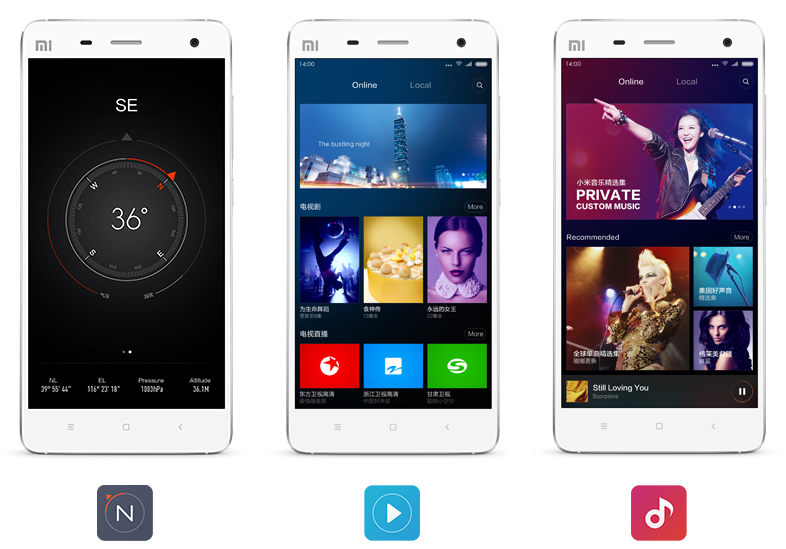Android to be Fragmented by the Big Guns of Mobile?
Recently, Microsoft was reportedly an investor in Cyanogen, the rogue Android operating system that Google hopes to kill one day. With the investment, Google probably has to deal with another camp within Android that will split their control over the OS.
This is not the first, Amazon was the big player who decided to go its own way with the Kindle and launched a competing version of Android that has no relations with the Google version. Then came Nokia’s X series, which Microsoft decided to kill off upon taking control on the Finnish company.
Windows Mobile is still a struggling OS. Blackberry isn’t much of contender unless you’re the Snowden type so for the rest of us, it’s just Android and Apple iOS. The others like Tizen, Ubuntu and Sailfish OS have yet to deliver a viable competitor to the old time favorites. So Cyanogen seems to be a good bet, or so it seems. But the folks at Mi (rice in Chinese) have a better idea, why not take Cyanogen and skin that to their ecosystem?
Cyanogen have been given a fresh start with a capital injection rumored to be around 70 million from Microsoft. It was struggling under its own open source weight and could not get enough geeks to support the numerous devices listed on its site. When Cyanogen decided to go commercial, they were not prepared for the task at hand so the money from Redmond will help sort out its own mess. Oppo has partnered Cyanogen in the past with the N1 variant but Oppo has since taken on itself to move forward into the Global market with a Google approved version.
MIUI Alternative
Hugo Barra may have left Google for greener pastures in China. In Silicon Valley, he’s just another tech guy but at Xiaomi, he’s driving both MI phones and operating system to global markets. Xiaomi is an ass kicker in China. It runs and supports its own eco-system which emulates what Apple has done to some degree.
For example, Xiaomi’s own MiMarket, which is just like Google’s Playstore, operates on the same principle as Apple’s Appstore in that it weeds out malware apps before listing it on its own store. However MiMarket is predominately in Chinese and is a hindrance to the English speaking world. Even though Mi user interface on Android have been floating around for people to download and install — many still do not know of its existence. MiUI isn’t exactly an ecosystem, what Xiaomi has done is to use the MIUI on Cyanogen Mod for people to experience what they have created on HTC, Samsung and Motorola.
This means there will be bugs though the support forum is relatively active to stamp those out. MiUI has its own channels in China that supports group buying, videos, music and games. It does not however offer Google type services such as Playstore and Gmail. Your MI account only gives you additional benefits such as a Cloud hosting account but beyond that, it’s pretty much the same.
Licensing Agreements with Google
Whenever a phone manufacturers wishes to use stock Android, it has to sign an agreement and pay a license fee. That fee is paltry, but you must offer standard Google services such as Maps, Playstore, gmail, etc before you can distribute it.
MIUI in China skips this process by breaking the stock google OS and installing its own with access to M i Market. So this means MIUI is a rogue Android OS just like Amazon’s. A rogue OS works best when you craft your own code into it—allowing you to access MIUI APIs that are proprietary. By doing so, it can also break certain app functions that adhere to strict Google standards—making them less likely to work when the app calls certain hardware routines. MI has a team monitoring the MI forums for bug reports and responds to them accordingly. So far, it’s been pretty good at handling concerns for MIUI for MI devices but but there is always a lingering concern that brands other than MI will not be entertained. There are loads of hardware issues that are not addresses and this has to do with Cyanogen Mod since MIUI doesn’t quite include the support for running its skinned OS on Samsung or HTC devices. MIUI is a good alternative to HTC Sense or Samsung Touchwiz but that’s generally where it ends.
Global March is a Slow One
Mi’s primary market is still China. Although Hugo Bara is spearheading its spread to third world nations, the problem with this march is that it is making baby steps instead of giant leaps, MIUI isn’t quite ready to offer the same eco-system that Apple does on a global scale. It is nice to see that Xiaomi has plans for global domination but it probably needs the necessary funding to go global at a more rapid pace.
What’s more, Xiaomi’s current Redmi Note 4G hasn’t got spectacular hardware specifications. 8GB internal storage along with 2GB RAM barely cuts it these days as more Google apps seem to occupy more storage space than ever. To think that the specs will last you 18 months into the future will be a gamble. Apps are getting more storage hungry and by this, you have to get a warehouse of sorts to keep them at bay. Every update of an App seems to swell in size and in the end, it just won’t hold all that without you first deleting and managing those that you seldom use.
Should I or Shouldn’t I?
To be frank, I hated the bloatware that came with Samsung devices. It tired to blend in a complete eco-system but failed at launch due to its lack of interest in competing with Google. As such, much of what you get on the Samsung app market is the same as those you get on Google Playstore. Trashing the Samsung bloatware is the main attraction for me at least.
The only difference is for the Galaxy Note series, where a series of apps were released to support the stylus input through Samsung’s own Appstore. Beyond that, Galaxy device users will find it very difficult to maintain those Samsung bloatware. Bloatware such as health apps and Samsung video and media centric apps cannot be erased.
Microsoft is in a very good position to hijack Android and splitting it from Google’s paws. It has the financial clout to pull it off and even make proprietary versions of it just like Amazon and Xioami in China (Xiaomi’s global march will be powered by an official version of Google’s Android with MIUI 6 on Lollipop).
With the new investment in Cyanogen, Microsoft has to learn to find the right balance. Cyanogen opens the doors to users from HTC and Samsung that could be Microsoft centric—puffed up with a slew of Microsoft own services from Outlook mail, Bing Maps, Bing Streetview, Office 360 and Bing Search. Such a underhanded tactic could well destroy Google’s hold on Android. Will Nadella take this swipe at a rival after coming onboard as CEO? Only time will tell. Xiaomi does not have the clout to fight off patent lawsuits that will start flying when it enters global markets but Microsoft is already a patent leader in mobile technologies. As a matter of fact, Microsoft makes more money from mobile based patent royalties than it does from Windows Mobile licensing.
The long term view here is that Xiaomi will just be another User Interface for the rest of us while Microsoft could have its own ecosystem embedded in future releases of Cyanogen. That would be, in short, the worst nightmare for Google.






